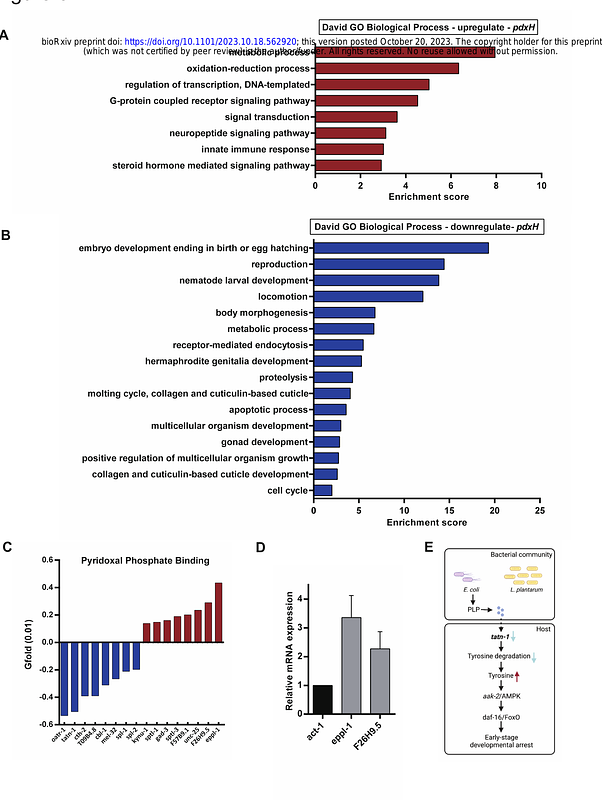Bacterial vitamin B6 required for post-embryonic development in C. elegans

Bacterial vitamin B6 required for post-embryonic development in C. elegans
Feng, M.; Gao, B.; Ruiz, D.; Garcia, L. R.; Sun, Q.
AbstractNutritional intake influences animal growth, reproductive capacity, and survival of animals. Under nutrition deficiency, animal developmental arrest occurs as an adaptive strategy to survive. However, the nutritional basis and the underlying nutrient sensing mechanism essential for initiating animal regrowth after developmental arrest remain to be explored. In Caenorhabditis elegans, larvae undergo early developmental arrest are stress resistant, and they require certain nutrients to initiate postembryonic development. Here, we investigated the developmental arrest in C. elegans feeding on Lactobacillus plantarum, and the rescue of the diapause state with trace supplementation of Escherichia coli. We performed a genome-wide screen using 3983 individual gene deletion E. coli mutants and identified E. coli genes that are indispensable for C. elegans larval growth on original not nutritionally sufficient bacteria L. plantarum. Among these crucial genes, we confirmed E. coli pdxH, and the downstream metabolite pyridoxal 5-P (PLP, Vitamin B6) as essential nutritional factors initiating C. elegans postembryonic development. Transcriptome results suggest that bacterial pdxH affects host development by coordinating host metabolic processes and PLP binding. Additionally, bacterial PLP may act as a cofactor for host tyrosine aminotransferase, thereby promoting the translocation of daf-16 to nucleus. Altogether, these results highlight the role of microbial metabolite PLP as a crucial micronutrient to recover postembryonic development in C. elegans.